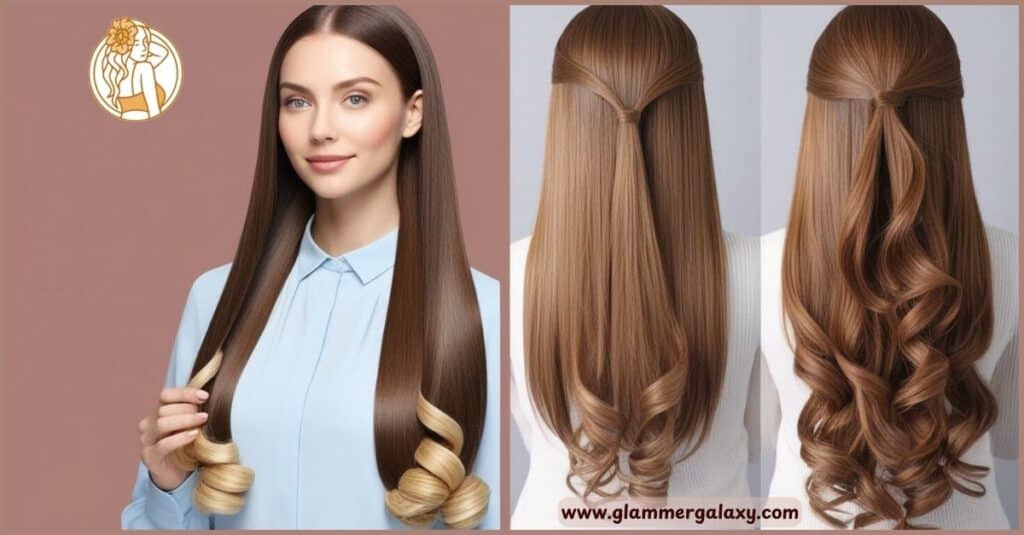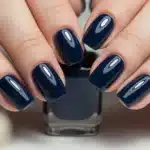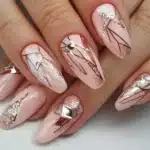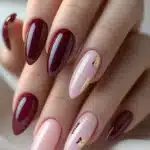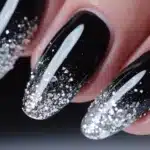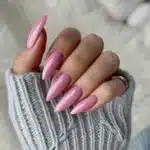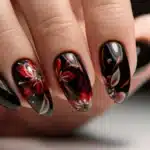Have you ever noticed your straight hair suddenly developing curls at the ends? You’re not alone! This fascinating phenomenon, known as straight hair with curled ends, is more common than you might think.
In this comprehensive guide, we’ll explore the science behind this unique hair texture, its benefits and challenges, and how to care for and style your locks to perfection.
Understanding the Science of Straight Hair with Curled Ends
Before we dive into the nitty-gritty of managing straight hair with curls at the ends, let’s explore the science behind this intriguing hair texture.
The Structure of Hair Strands
Hair is composed of three main layers:
- Cuticle: The outer protective layer
- Cortex: The middle layer that determines hair color and strength
- Medulla: The innermost layer (not present in all hair types)
The shape of your hair follicles plays a crucial role in determining whether your hair is straight, wavy, or curly. Straight hair typically grows from round follicles, while oval or asymmetrical follicles produce wavy or curly hair.
The Role of Keratin
Keratin, a protein that forms the main structure of hair, is crucial in determining hair texture. The arrangement of keratin proteins in the hair shaft influences whether hair grows straight or curly. In straight hair, keratin proteins are evenly distributed, while in curly hair, they’re asymmetrically arranged.
Certainly. Here’s an expanded version of the paragraph on factors influencing hair texture:
Factors Influencing Hair Texture
The texture of your hair strands is a complex characteristic influenced by a variety of factors. Understanding these factors can help you better manage and care for your unique hair type, especially if you have straight hair with curled ends. Let’s delve deeper into each of these influential elements:
Genetics: The Foundation of Your Hair Type
Your genetic makeup is the primary determinant of your hair texture. The genes you inherit from your parents play a crucial role in shaping the structure of your hair follicles and the composition of your hair strands.
- Hair follicle shape: The shape of your hair follicles, determined by your genes, largely dictates whether your hair grows straight, wavy, or curly. Round follicles typically produce straight hair, while oval or asymmetrical follicles result in wavy or curly hair.
- Protein composition: Genes also influence the types and amounts of proteins present in your hair, particularly keratin. The arrangement of keratin proteins in the hair shaft significantly affects your hair’s texture and behavior.
- Ethnic background: Your genetic heritage can predispose you to certain hair textures. For example, people of African descent often have tightly coiled hair, while those of Asian descent typically have straight hair.
Hormones: The Dynamic Influencers
Hormonal changes throughout your life can have a significant impact on your hair texture. These changes can be temporary or long-lasting, depending on the underlying cause.
- Puberty: The onset of puberty often brings about changes in hair texture due to the surge of hormones like testosterone and estrogen.
- Pregnancy: Many women experience changes in their hair texture during pregnancy, often resulting in thicker, fuller hair. Post-pregnancy hormonal shifts can lead to temporary hair loss and texture changes.
- Menopause: The decrease in estrogen levels during menopause can lead to finer, thinner hair and may alter its texture.
- Thyroid disorders: Conditions affecting the thyroid gland can lead to changes in hair texture, often resulting in dry, brittle hair.
Age: The Inevitable Factor
As you age, your hair undergoes natural changes that can affect its texture:
- Graying: The loss of pigment in your hair as you age can alter its texture, often making it coarser or wiry.
- Thinning: Age-related hair thinning can change the overall appearance and feel of your hair.
- Hormonal changes: Age-related hormonal shifts can influence hair texture throughout your life.
Environmental Factors: External Influences
The environment you live in and expose your hair to can significantly impact its texture:
- Climate: Humidity levels can affect hair texture, often causing frizz or enhancing curl patterns in high humidity environments.
- Sun exposure: UV rays from the sun can damage hair, leading to dryness, brittleness, and changes in texture.
- Pollution: Environmental pollutants can coat hair strands, altering their texture and potentially causing damage over time.
- Water quality: Hard water, which contains high levels of minerals, can leave deposits on hair, affecting its texture and manageability.
Hair Care Practices: The Controllable Factor
Your hair care routine and styling practices can have both short-term and long-term effects on your hair texture:
- Heat styling: Frequent use of heat styling tools like flat irons, curling wands, and blow dryers can alter hair texture, potentially leading to damage and changes in natural curl patterns.
- Chemical treatments: Processes such as perming, relaxing, or coloring can significantly change hair texture, sometimes permanently.
- Washing habits: Over-washing or using harsh shampoos can strip hair of natural oils, affecting its texture and health.
- Conditioning practices: Regular deep conditioning and use of leave-in treatments can improve hair texture and manageability.
- Mechanical stress: Frequent tight hairstyles, rough brushing, or towel drying can cause damage that alters hair texture over time.
Understanding these factors can help you make informed decisions about your hair care routine and better manage your unique hair texture. Remember, while some factors like genetics and age are beyond your control, you can mitigate the impact of environmental factors and adjust your hair care practices to maintain healthy, beautiful hair
The Impact of Genetics on Hair
The genetics of hair play a significant role in determining your hair texture. Several genes are involved in hair formation and growth, including:
- TCHH (Trichohyalin gene)
- EDAR (Ectodysplasin A receptor gene)
- FGFR2 (Fibroblast growth factor receptor 2 gene)
These genes influence the shape of your hair follicles and the production of proteins that contribute to hair structure.
See Also : 50 Stunning Purple Nail Ideas to Elevate Your Style
The Curious Case of Straight Hair with Curled Ends
So, why do some people have straight hair that curls at the ends? There are several possible explanations:
- Genetics of hair: Some individuals may have a genetic predisposition to this hair type
- Hair length and weight: Longer hair may curl at the ends due to its weight
- Hormonal changes: Pregnancy, puberty, or other hormonal shifts can cause texture changes
- Environmental factors: Humidity and temperature can affect hair texture
- Hair damage: Heat styling tools, chemical treatments, or lack of proper care can lead to curled ends
The Role of Hair Porosity
Hair porosity, which refers to your hair’s ability to absorb and retain moisture, can also contribute to curled ends. High porosity hair tends to be more prone to curling, especially at the ends where the hair is older and potentially more damaged.
Benefits of Straight Hair with Curled Ends
This unique hair texture comes with several advantages:
- Versatile styling options: You can embrace both straight and curly styles
- Natural volume: Curled ends add body and movement to otherwise flat hair
- Face-framing effect: The curls can soften facial features and create a flattering look
- Low-maintenance: This texture often requires less styling than fully straight or curly hair
Exploring Styling Versatility
With straight hair and curled ends, you have the flexibility to create various looks:
- Beachy waves: Your natural texture lends itself perfectly to this popular style
- Sleek ponytails: The curled ends add a playful touch to a classic updo
- Half-up, half-down styles: Showcase both textures in one chic look
- Braids: The curled ends add interesting texture to braided styles
“Straight hair with curled ends is like having the best of both worlds. It’s a natural, effortless look that many people try to achieve with styling tools.” – Celebrity hairstylist, Mark Townsend
Challenges of Managing Straight Hair with Curled Ends
While this hair type has its perks, it also comes with some unique challenges:
- Inconsistent texture: Managing two different textures can be tricky
- Frizz control: The curled ends may be more prone to frizz
- Styling difficulties: Achieving a uniform look may require extra effort
- Potential for split ends: The transition point between straight and curly hair may be more susceptible to damage
Dealing with Frizz
Frizz can be a particular challenge for those with straight hair and curled ends. Here are some tips to combat frizz:
- Use a microfiber towel to dry your hair gently
- Apply a leave-in conditioner to add moisture and tame flyaways
- Try the “plopping” technique to enhance your natural curl pattern without adding frizz
Caring for Straight Hair with Curled Ends
To keep your unique hair texture looking its best, follow these care tips:
Washing and Conditioning
- Use a sulfate-free shampoo to avoid stripping natural oils
- Apply conditioner primarily to the ends of your hair
- Try co-washing (washing with conditioner only) once a week to maintain moisture
The Importance of pH-Balanced Products
Using pH-balanced hair care products can help maintain the health of your hair and scalp. The ideal pH for hair products is between 4.5 and 5.5, which is slightly acidic and helps keep the hair cuticle closed, resulting in smoother, shinier hair.
Heat Protection
- Always use a heat protectant before styling with hot tools
- Set your styling tools to the lowest effective temperature
- Limit heat styling to 2-3 times per week
Understanding Heat Damage
Excessive heat can damage the protein bonds in your hair, leading to weakened strands and altered texture. This is particularly important for those with straight hair and curled ends, as the ends are often more vulnerable to damage.
Regular Trims
Schedule a trim every 6-8 weeks to prevent split ends and maintain healthy-looking curls at the ends of straight hair.
Deep Conditioning Treatments
Apply a deep conditioning mask once a week to nourish your hair and maintain its health.
DIY Deep Conditioning Treatment
Try this homemade deep conditioning treatment:
- Mix 1 ripe avocado
- 2 tablespoons of olive oil
- 1 tablespoon of honey
Apply to damp hair, focus on the ends, leave for 30 minutes, then rinse thoroughly.
Recommended Products for Straight Hair with Curled Ends
| Product Type | Recommended Option | Key Benefits |
| Shampoo | DevaCurl Low-Poo Original | Sulfate-free, gentle cleansing |
| Conditioner | Briogeo Don’t Despair, Repair! | Deep conditioning, strengthening |
| Leave-in Treatment | It’s a 10 Miracle Leave-In Product | Detangling, heat protection |
| Styling Cream | Moroccanoil Curl Defining Cream | Enhances natural texture |
| Heat Protectant | CHI 44 Iron Guard Thermal Protection Spray | Shields hair from heat damage |
Choosing the Right Products
When selecting products for your straight hair with curled ends, consider the following:
- Moisture balance: Look for products that provide hydration without weighing down your hair
- Protein content: Incorporate protein treatments to strengthen your hair, especially if it’s damaged
- Silicone-free options: While silicones can provide temporary smoothness, they may build up over time and affect your natural texture
Styling Techniques for Straight Hair with Curled Ends
Enhancing Natural Texture
- Apply a curl-enhancing cream to damp hair
- Scrunch the ends gently
- Air dry or use a diffuser attachment on your hair dryer
The Scrunching Technique
Proper scrunching can enhance your natural curls:
- Apply styling product to very damp hair
- Tilt your head to one side
- Using your palm, gently squeeze sections of hair upwards towards your scalp
- Repeat on the other side and at the back of your head
Creating Uniform Curls
- Use a curling iron or wand on the straight portions of your hair
- Match the curl pattern to your natural curled ends
- Finish with a light-hold hairspray
Choosing the Right Curling Tool
- For loose waves, use a 1.5-inch barrel curling iron
- For tighter curls, opt for a 3/4-inch barrel
- Consider a tapered curling wand for more natural-looking curls
Straightening Methods
- Apply a smoothing serum to damp hair
- Use a round brush while blow-drying
- Finish with a flat iron, focusing on the curled ends
The Importance of Sectioning
When straightening your hair, proper sectioning is key:
- Divide your hair into four sections: two at the front and two at the back
- Work with small subsections (about 1-inch wide) for more effective straightening
- Start at the nape of your neck and work your way up
Updos and Braids
- Try a messy bun to showcase your natural texture
- Create a braided crown to blend the two textures seamlessly
- Experiment with half-up, half-down styles to highlight your unique hair type
Tutorial: Messy Bun for Straight Hair with Curled Ends
- Gather your hair into a high ponytail
- Twist the ponytail and wrap it around its base
- Secure with bobby pins
- Gently pull out a few face-framing pieces
- Loosen the bun slightly for a messy, effortless look
Embracing Your Natural Hair Texture
Learning to love and appreciate your natural hair texture, such as straight hair with curled ends, is a significant step in your hair care journey. By embracing your unique texture, you can enhance your overall appearance and boost your confidence. Here are some practical tips and inspiration to help you celebrate and make the most of your distinctive hair type:
Tips for Embracing Your Unique Texture
- Experiment with Different Styles:
Explore a variety of hairstyles that complement and highlight your natural texture. For straight hair with curled ends, you might try looks that enhance the natural curl or add volume and movement. Consider styling options like soft waves, beachy curls, or sleek straight styles with subtle flicks at the ends. Experimenting with different styles can help you discover what works best for you and can make daily styling a more enjoyable process.
- Find Inspiration:
Seek out celebrities, influencers, or public figures who have a similar hair texture to yours. Observing how they style their hair can provide you with creative ideas and practical tips for managing and showcasing your own texture. For example, look at how these personalities incorporate their natural curls and straight ends into their looks. This can help you visualize how to adapt similar styles for your own hair.
- Practice Self-Acceptance:
Embracing your natural hair texture is not just about the physical appearance but also about cultivating a positive self-image. Acknowledge that your unique texture is a distinctive feature that contributes to your individuality. By practicing self-acceptance, you reinforce the idea that your natural hair is an asset rather than a challenge. Remember that loving your hair as it is can be empowering and affirming.
Celebrities with Straight Hair and Curled Ends
Many celebrities have confidently embraced their straight hair with curled ends, showcasing how this texture can be stylish and versatile. Here are a few notable examples:
- Jennifer Aniston: Renowned for her iconic “Rachel” haircut, Jennifer Aniston has often worn her hair with straight lengths and flipped or curled ends. This look became a defining style of the ’90s and remains a classic choice for those with similar hair textures.
- Alexa Chung: Known for her chic and effortless style, Alexa Chung frequently sports a straight-to-wavy hairstyle that highlights her natural texture. Her casual waves and subtly curled ends perfectly capture a relaxed yet fashionable look.
- Zendaya: A trendsetter in the entertainment industry, Zendaya has been seen flaunting straight hair with curled ends on various red carpets and events. Her ability to adapt this texture into glamorous and sophisticated looks demonstrates the versatility and elegance of this style.
Inspirational Quote
“The key to great hair is to work with your natural texture, not against it. Embrace what you’ve got!” – Jen Atkin, celebrity hairstylist
This quote emphasizes the importance of working with your hair’s natural characteristics rather than trying to alter them drastically. By embracing and celebrating your straight hair with curled ends, you not only enhance your personal style but also embrace a more authentic and confident version of yourself.
The Impact of Lifestyle on Hair Texture
Your lifestyle choices can significantly affect your hair texture, especially if you have straight hair with curled ends:
Diet and Nutrition
A balanced diet rich in vitamins and minerals can improve hair health:
- Protein: Essential for hair growth and strength
- Biotin: Promotes healthier hair and may help with texture
- Omega-3 fatty acids: Can improve hair shine and reduce inflammation
Stress Management
Chronic stress can affect hair growth and texture:
- Practice stress-reduction techniques like meditation or yoga
- Ensure you’re getting enough sleep
- Consider scalp massages to improve blood circulation and reduce stress
Exercise and Hair Care
Regular exercise is great for overall health, but it can present challenges for hair care:
- Use a sweat-wicking headband during workouts to protect your hair
- Rinse your hair post-workout if you don’t have time for a full wash
- Consider dry shampoo to refresh your hair between washes
Explore this related article too : 3 DIY Recipes and Fully Guide About Coconut Butter for Hair
Case Study: Sarah’s Hair Transformation
Sarah, a 28-year-old marketing executive, always struggled with her straight hair that curled at the ends. She tried everything from excessive heat styling to chemical treatments to achieve a uniform texture. However, these methods left her hair damaged and lifeless.
After consulting with a professional stylist, Sarah learned to embrace her unique hair texture. She adopted a new hair care routine:
- Switched to sulfate-free products
- Incorporated weekly deep conditioning treatments
- Limited heat styling to twice a week
- Experimented with styles that showcased her natural texture
Results:
- Healthier, shinier hair
- Reduced styling time
- Increased confidence in her appearance
Sarah’s story demonstrates that with the right approach, straight hair with curled ends can be a beautiful and manageable hair type.
Sarah’s Weekly Hair Care Routine
| Day | Morning | Evening |
| Monday | Co-wash, air dry | Apply leave-in conditioner |
| Tuesday | Dry shampoo if needed | Gentle brush |
| Wednesday | Wash with sulfate-free shampoo | Apply hair oil to ends |
| Thursday | Style with heat protectant | Pineapple hair for sleep |
| Friday | Refresh curls with water spray | Apply leave-in conditioner |
| Saturday | Deep conditioning treatment | Air dry |
| Sunday | Rest day for hair | Gentle detangling |
When to Seek Professional Help
While many hair care routines can be managed at home, there are times when professional help is beneficial:
- Severe damage or breakage: If your hair is extremely dry, brittle, or breaking, consult a professional stylist or trichologist
- Difficulty achieving desired styles: A skilled stylist can teach you techniques specific to your hair type
- Considering a major change: For significant cuts or color changes, always seek professional advice
Finding the Right Stylist
When looking for a stylist to help with your straight hair and curled ends:
- Research stylists who specialize in textured hair
- Look at their portfolio for examples of work on similar hair types
- Schedule a consultation before committing to a full service
- Don’t be afraid to ask questions about their experience and approach
The Science of Hair Growth and Texture Changes
Understanding the hair growth cycle can help you better manage your straight hair with curled ends:
The Hair Growth Cycle
- Anagen Phase: The active growth phase, lasting 2-7 years
- Catagen Phase: The transitional phase, lasting about 10 days
- Telogen Phase: The resting phase, lasting about 3 months
Changes in texture often occur during the transition between phases or as new hair grows in.
Factors Affecting Hair Growth and Texture
Several factors can influence how your hair grows and its resulting texture:
- Age: Hair often becomes finer and may change texture as we get older
- Hormones: Hormonal changes can alter hair texture and growth patterns
- Medications: Some medications may affect hair growth and texture
- Health conditions: Certain health issues can impact hair growth and texture
FAQs About Straight Hair with Curled Ends
- Q: Can diet affect hair texture?
A: Yes, diet can influence hair texture. A balanced diet rich in proteins, vitamins (especially biotin, vitamins A, C, and E), and minerals (like iron and zinc) can promote healthier hair. Nutritional deficiencies can lead to dry, brittle hair or even changes in hair texture. For example, a lack of protein can result in weaker, more fragile hair, while omega-3 fatty acids can improve hair’s elasticity and shine. - Q: Is it possible to permanently change hair texture without chemical treatments? A: While it’s not possible to permanently change your hair texture without chemical treatments, there are some natural methods that can alter it temporarily. These include:
- Heatless curling methods (like braiding damp hair overnight)
- Using different types of brushes or combs
- Applying natural oils or masks (like coconut oil or avocado masks)
- Changing your hair’s protein-moisture balance through specific hair care products However, these methods typically offer temporary results and need to be repeated regularly to maintain the desired texture.
- Q: How does medication affect hair texture?
A: Certain medications can indeed affect hair texture. Some common examples include:- Birth control pills: Can make hair feel more or less oily, or even change its curl pattern
- Acne medications like Accutane: Often cause hair to become drier and more brittle
- Blood pressure medications: May lead to hair thinning, which can change the overall texture
- Chemotherapy drugs: Can cause significant changes in hair texture when hair regrows after treatment If you notice changes in your hair texture after starting a new medication, it’s advisable to consult with your healthcare provider.
You might like : Does Black Hair Dye Damage Hair? Debunking the Myths
The Role of Hair Porosity in Texture Management
Understanding your hair’s porosity can help you better manage your straight hair with curled ends:
The Role of Hair Porosity in Texture Management
Understanding your hair’s porosity is crucial for effectively managing and maintaining the health of your hair, particularly when dealing with textures such as straight hair with curled ends. Hair porosity refers to how well your hair can absorb and retain moisture, which in turn affects the type of products and care routines that will be most beneficial for you.
Types of Hair Porosity
- Low Porosity: Hair with low porosity has tightly closed cuticles. This means that moisture struggles to penetrate the hair shaft, making it challenging for your hair to absorb and retain products. People with low porosity hair often find that conditioners and treatments sit on the surface rather than being absorbed, leading to product buildup and a lack of hydration.
- Medium Porosity: In medium porosity hair, the cuticles are slightly open, allowing for a balanced level of moisture retention. This type of porosity usually means that hair can absorb and retain products and moisture fairly well. It is often considered the most manageable type, as it typically doesn’t require extensive modifications in product choices or hair care routines.
- High Porosity: Hair with high porosity has cuticles that are very open, which allows moisture to enter the hair shaft easily. However, this also means that moisture can escape just as quickly. High porosity hair can often feel dry and brittle despite frequent moisturizing. This type of hair may be prone to damage and frizz, requiring more intensive moisture and protein treatments to maintain its health and elasticity.
How to Determine Your Hair Porosity
To determine your hair’s porosity, you can perform a simple test known as the float test:
- Float Test:
- Take a clean, dry strand of hair and place it in a glass of room-temperature water.
- Observe the behavior of the strand:
- If the hair strand floats on the surface, it is an indication of low porosity. This is because low porosity hair tends to resist water absorption.
- If the strand sinks slowly and remains suspended in the middle of the glass, your hair likely has medium porosity. This means that your hair is able to absorb and retain moisture at a balanced rate.
- If the strand sinks immediately to the bottom, this suggests high porosity. High porosity hair absorbs water quickly but also loses moisture just as fast.
Understanding your hair’s porosity is essential for tailoring your hair care regimen to fit your specific needs. By identifying whether you have low, medium, or high porosity hair, you can select the most suitable products and techniques to keep your hair healthy, well-moisturized, and looking its best. This knowledge helps you optimize your hair care routine, ensuring that your straight hair with curled ends remains well-managed and beautifully styled.
Watch this interesting video about curling hair :
Conclusion: Embracing Your Unique Hair Texture
Straight hair with curled ends is a unique and beautiful hair type that offers the best of both worlds. By understanding the science behind your hair texture and implementing proper care and styling techniques, you can embrace and enhance your natural locks.
Remember, your hair is as unique as you are. Whether you choose to enhance your natural texture or experiment with different styles, the key is to maintain healthy hair that makes you feel confident and beautiful.
So, go ahead and rock those straight strands with curly ends – you’re in good company with many others who share this fascinating hair type!
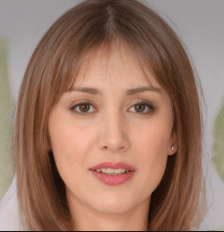
Sarah Williams is an experienced blogger and fashion enthusiast at Glammer Galaxy. With a passion for beauty and style, she shares expert insights on hair trends, nail art, and fashion tips. Her creative flair and years of experience make her a go-to source for all things glam!

